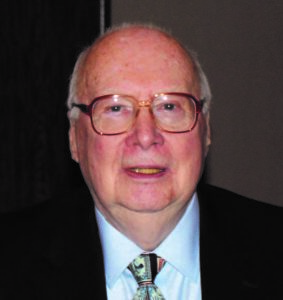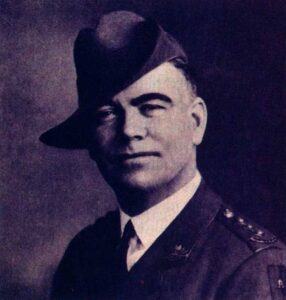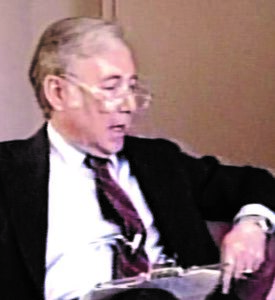Al Kugel (1930-2022) was associated with many philatelic organizations, but especially Chicagopex, the Military Postal History Society, and the American Philatelic Society. He  served as a director of the Chicago Philatelic Society (CPS), and as exhibit chairman and general chairman of Chicagopex. The CPS honored Kugel with its Saul Newbury and Aubrey Berman awards.
served as a director of the Chicago Philatelic Society (CPS), and as exhibit chairman and general chairman of Chicagopex. The CPS honored Kugel with its Saul Newbury and Aubrey Berman awards.
A Life Member of the Military Postal History Society, Kugel served as its director, vice president and president. At the time of his death, Kugel had the lowest membership number (434) of any active member.
With his experience in the investment field, Kugel brought financial stability to Chicagopex, considered to be one of the best World Series of Philately venues. As a member of the American Philatelic Society’s finance committee, he advised the APS on its investment portfolio.
Kugel was an expert on military postal history and had more than 100 single and multiframe exhibits in this field. He contributed scores of articles in this area, many of them in the Military Postal History Society Bulletin. He also contributed to The American Philatelist; Collectors Club Philatelist; the Postal History Society Journal; Rossica, the journal of Russian philately; and German Postal Specialist, among others. Kugel and co-author Ed Dubin received the United States Stamp Society’s Barbara Mueller award for the best article in the 2017 issues of The American Philatelist.
Al was an APS accredited philatelic judge and served on CANEJ. In 2005, he was awarded the John N. Luff award for distinguished philatelic research and in 2011 he was elected to the APS Writers Hall of Fame. He was a council member of the American Philatelic Congress, an officer in the Collectors Club of Chicago, a Fellow of the Royal Philatelic Society London, and he served on the Smithsonian National Postal Museum’s Council of Philatelists.
He also won many single-frame exhibit competitions and did much to popularize that form.
VSC Note: Al was a frequent financial analyst on CNN in the late 1990s and first decade of this century. In a Tiffany Dinner talk, he told how that came about: His office was in the same building as CNN’s Chicago bureau. When CNN needed an expert on economics or finance, a producer would call him, he’d throw on his jacket and head for the stairwell.
Reginald Stafford “Captain Tim” Healy was born in Sydney, Australia in 1892. He fought through World War I with the Australian Army and was part of the Allied forces at Gallipoli.
 Reginald Healy came to the United States to learn the oil business in Texas. There, he met his future wife, Margaret, a schoolteacher, and they moved from Gainesville, Texas to New York Coty, where he ran the financial side of a small oil company.
Reginald Healy came to the United States to learn the oil business in Texas. There, he met his future wife, Margaret, a schoolteacher, and they moved from Gainesville, Texas to New York Coty, where he ran the financial side of a small oil company.
The business collapsed in 1929, and after that, he did whatever he could to survive, his son recalled, including sweeping streets. For a time, he had a radio show called “Captain Tim’s Stamp Club of the Air” on NBC. Healy used his son’s name as his on-air personality.
In the early 1930s, Henry Ellis Harris partnered with the consumer products firm Procter and Gamble to produce a radio show using “Captain Tim” to sell stamps. For a small price (and a couple of box tops from some Ivory Snow detergent), a person could be a stamp collector. Another Harris insight was that collectors not only needed stamps, but they needed a low-priced series of albums to put them in. The radio show that Harris produced and hosted by “Captain Tim” Healy, offered not only stamps but a small album to put them in. Captain Tim’s albums were produced in the millions.
Thanks to Captain Tim’s exciting tales of battle and stamps, thousands, young and old, joined the rank of collector.
Although he was a prominent physician, Dr. Stanley Bierman (1935-2022) worked diligently at assembling one of the world’s greatest private philatelic libraries, putting it to good use as a tool for research on philately’s greatest stamp collectors.
 Perhaps even more importantly, Bierman also actively worked to preserve philatelic oral history by initiating a series of insightful video interviews with some of the most important living figures in philately. He is shown interviewing Raymond Weill at AMERIPEX ’86. Without Bierman’s strenuous efforts, much philatelic history and many fascinating anecdotes would have been lost forever.
Perhaps even more importantly, Bierman also actively worked to preserve philatelic oral history by initiating a series of insightful video interviews with some of the most important living figures in philately. He is shown interviewing Raymond Weill at AMERIPEX ’86. Without Bierman’s strenuous efforts, much philatelic history and many fascinating anecdotes would have been lost forever.
Bierman’s masterful 2016 summary article on Philatelic Literature, Its Lore and Heritage is available in the Philatelic Literature Review. Furthermore, the surprisingly entertaining and fascinating story of how Bierman’s own philatelic library came to be formed is recounted in earlier PLR articles published in 1984-1985.




I suspect Al Kugel had more different exhibits in the Champion of Champions competition than any other exhibitor in the history of that event — in several years he had multiple entries. At least once he represented three!
Ada